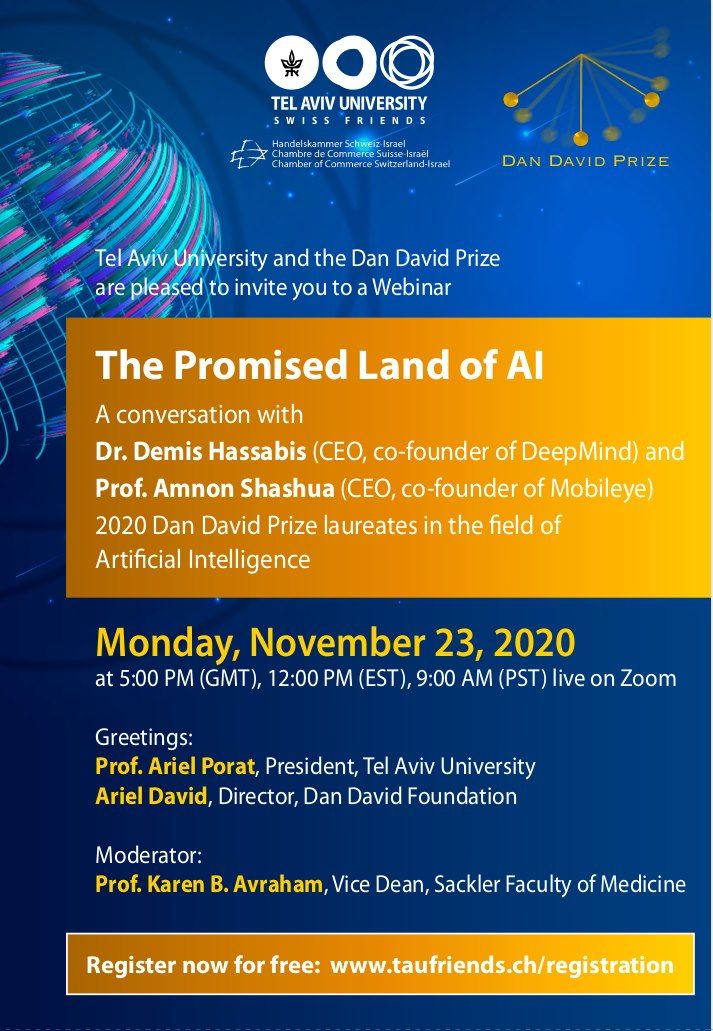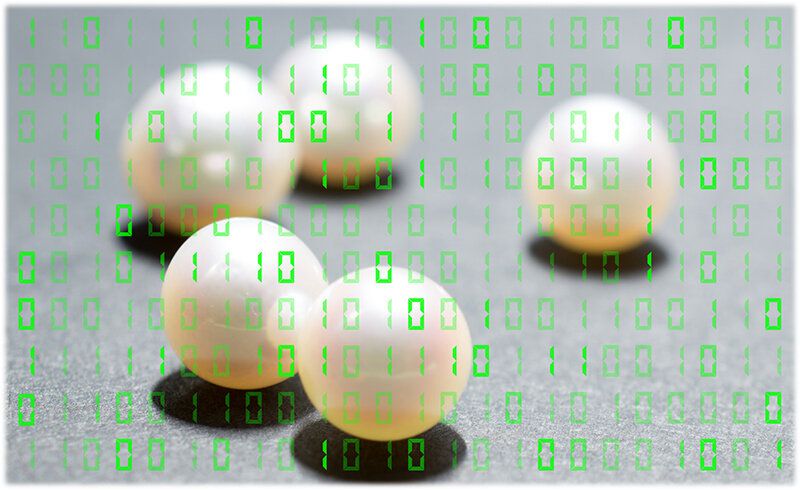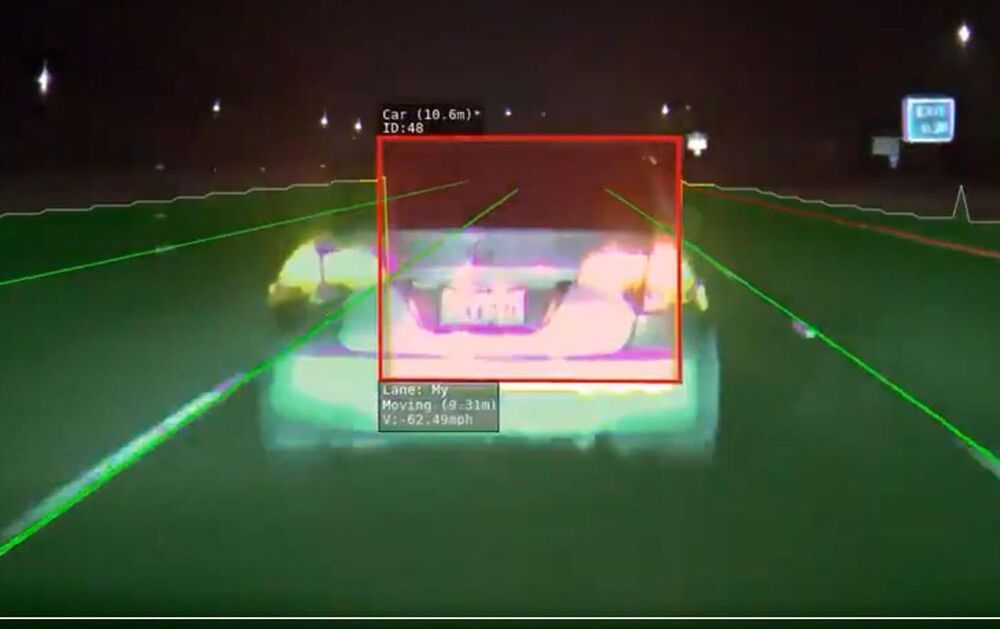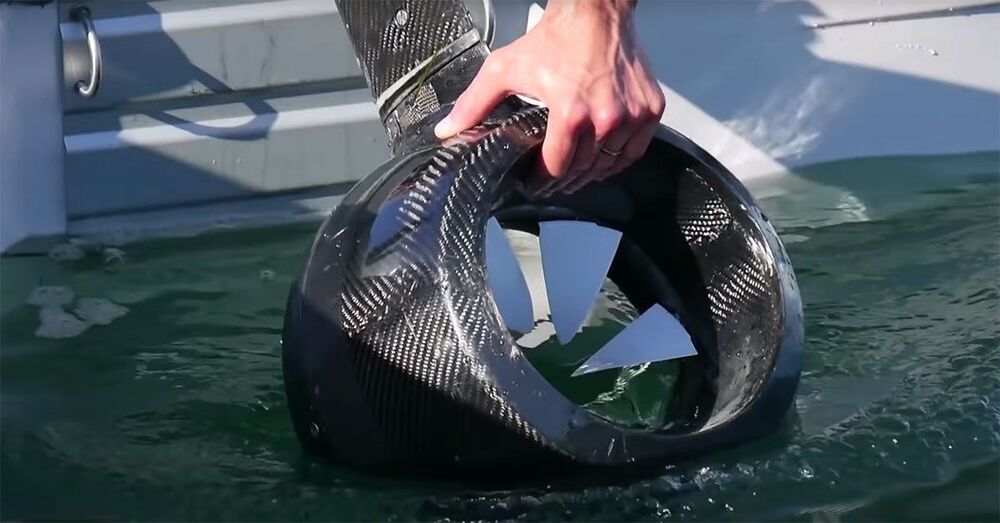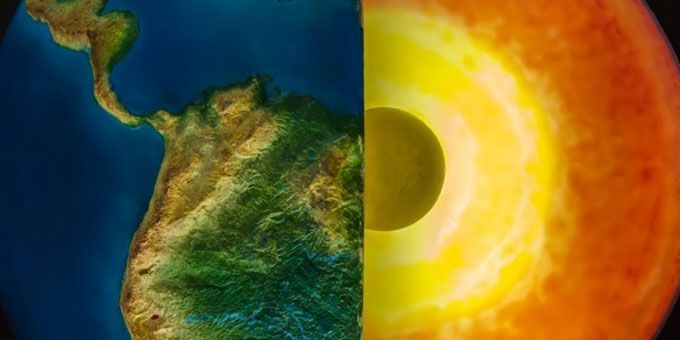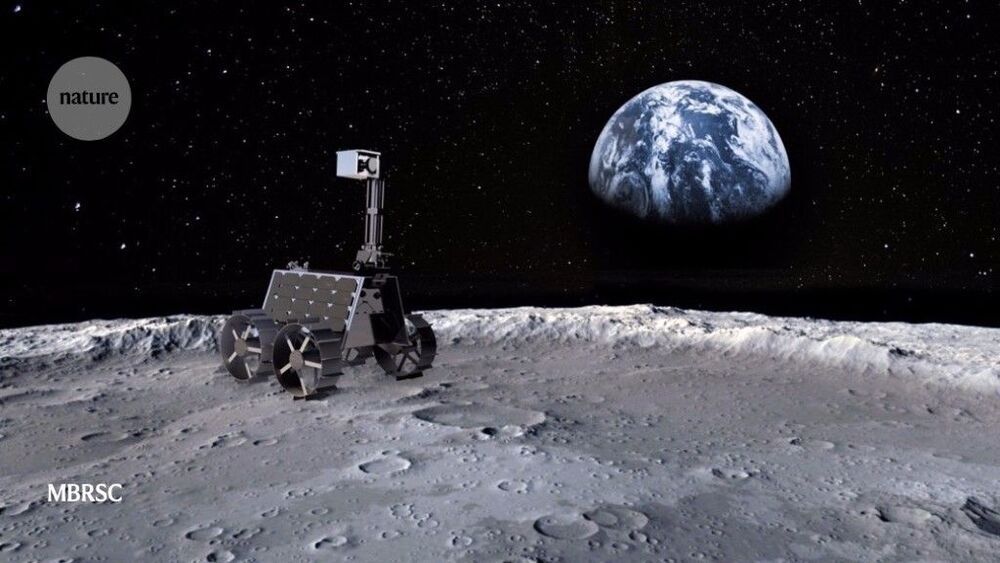(next Monday, 23rd November)
Please pre-register at https://www.taufriends.ch/registration
Please pre-register at https://www.taufriends.ch/registration
“We are delighted to bring you access to two giants in the world of AI, 2020 Dan David laureates, Dr. Demis Hassabis, co-founder and CEO of DeepMind, the world’s leading AI research company, and Prof. Amnon Shashua, CEO and co-founder of Mobileye, the largest ever Israeli acquisition whose technology powers more than 55 million cars around the world today. Dr. Hassabis and Prof. Shashua will enlighten us on the potential of AI at an exclusive event in conjunction with the Dan David Prize on Monday, November 23, 2020.”
